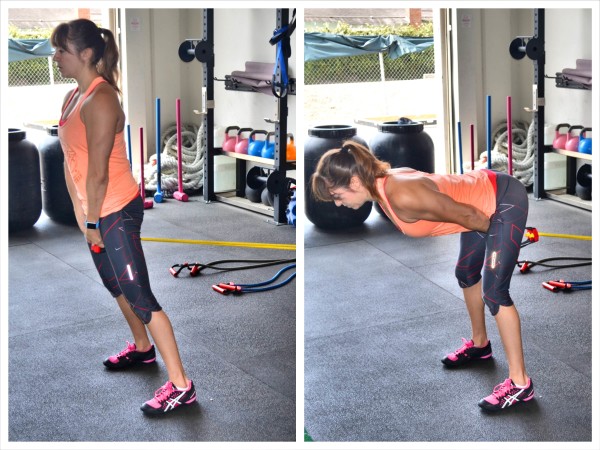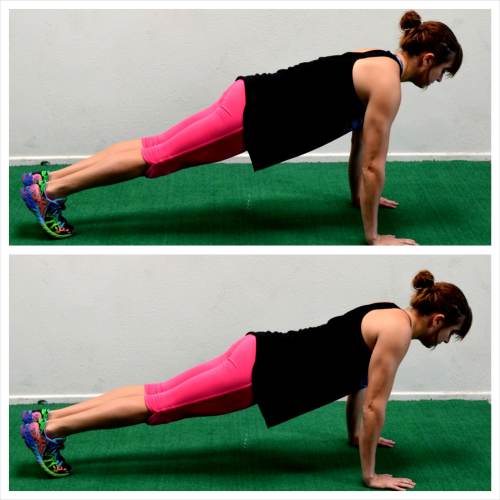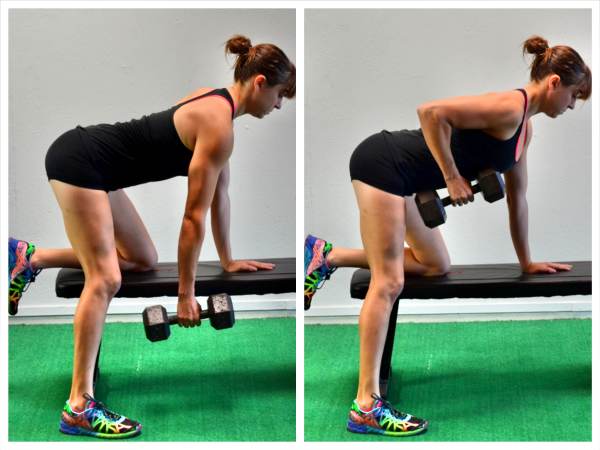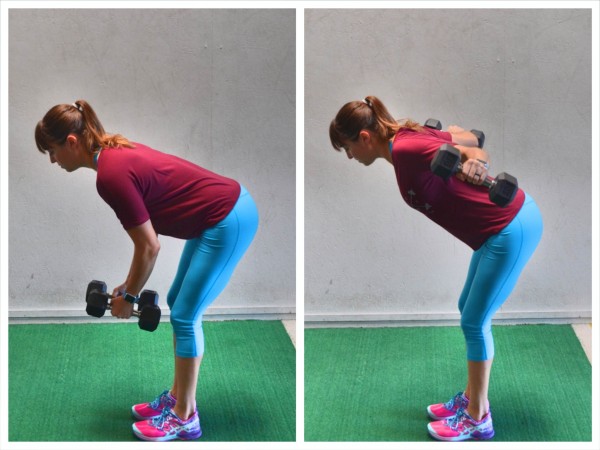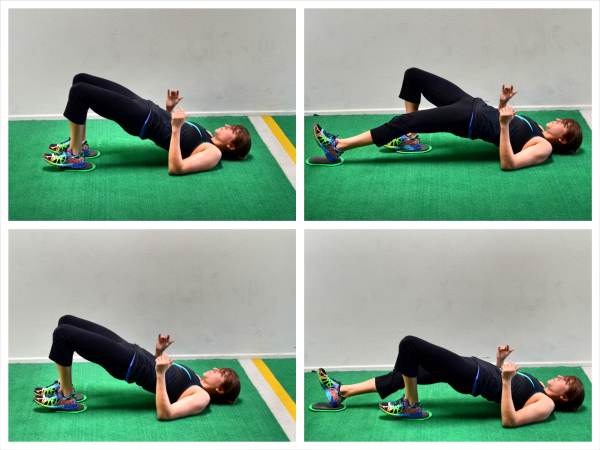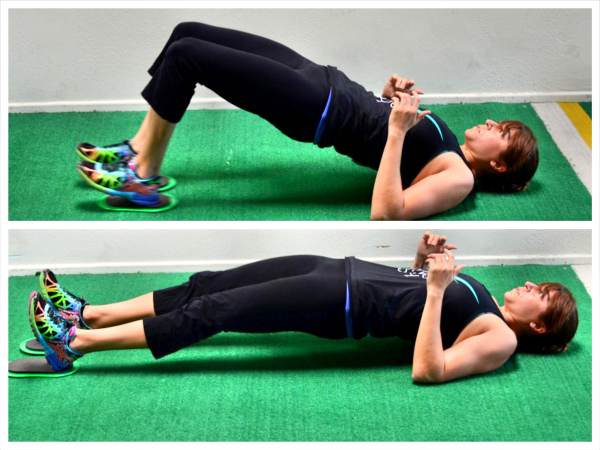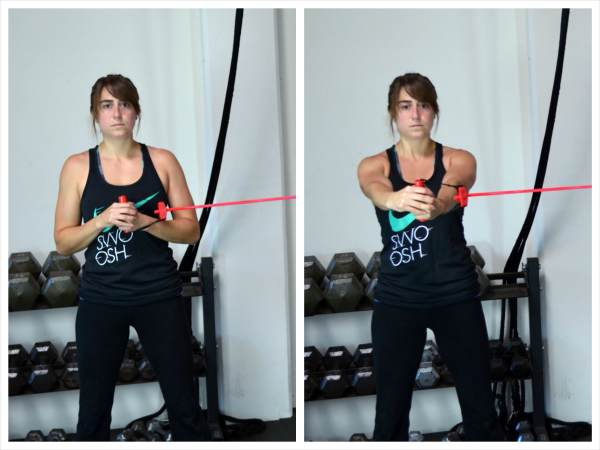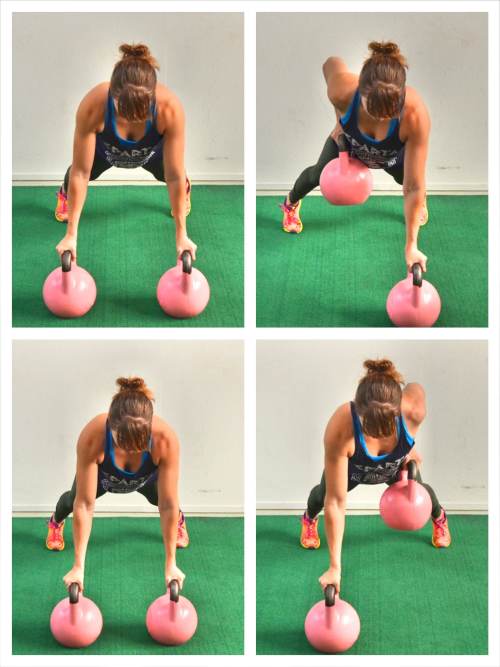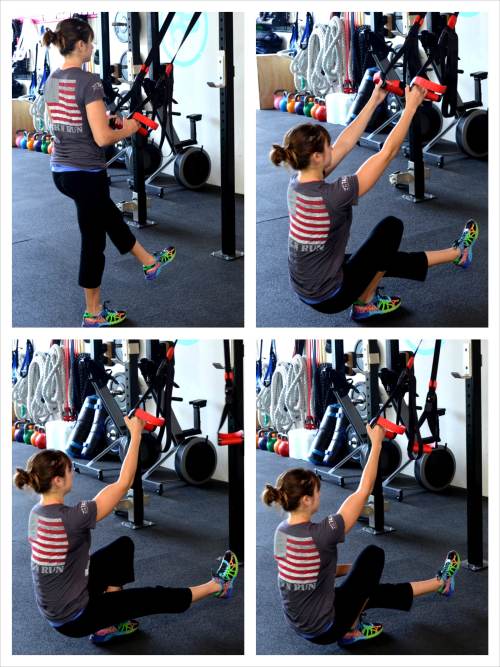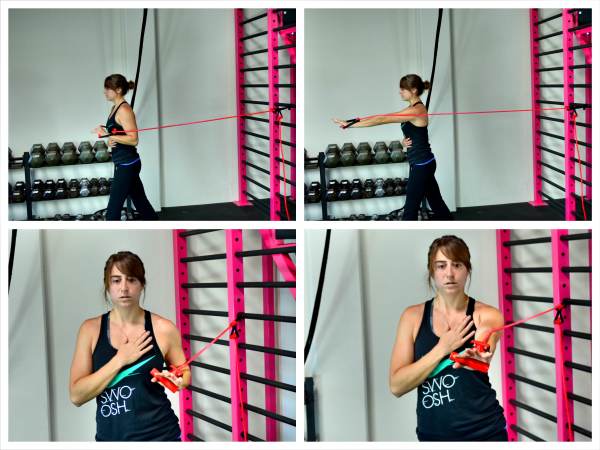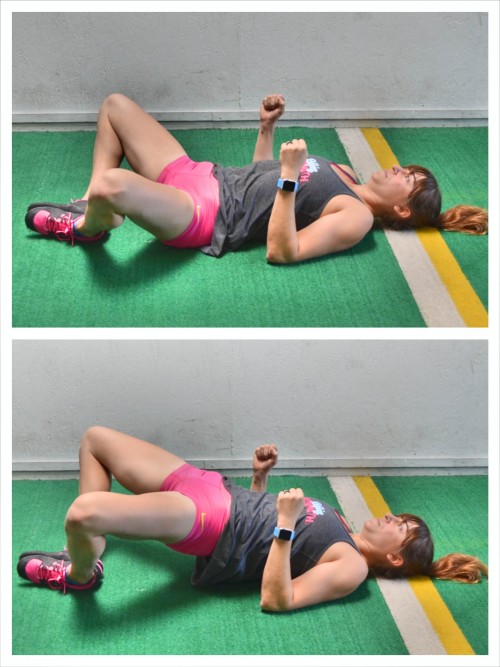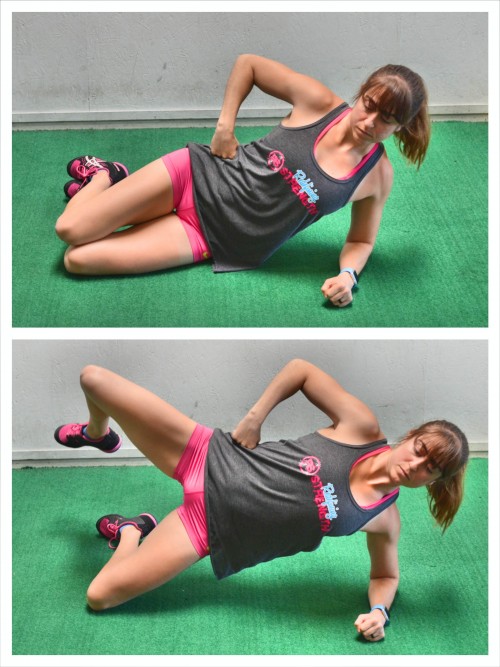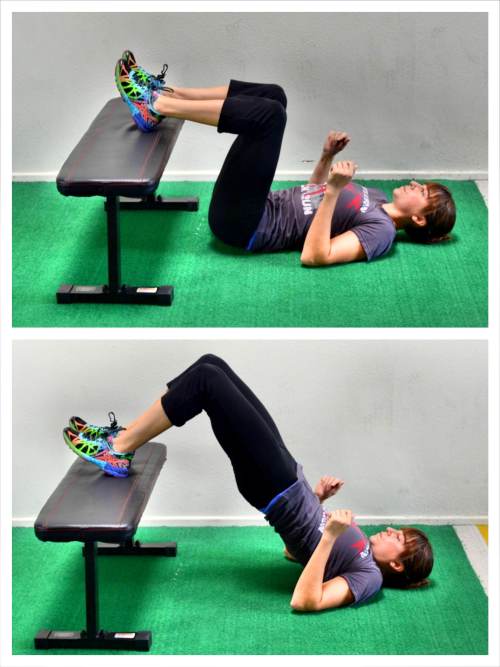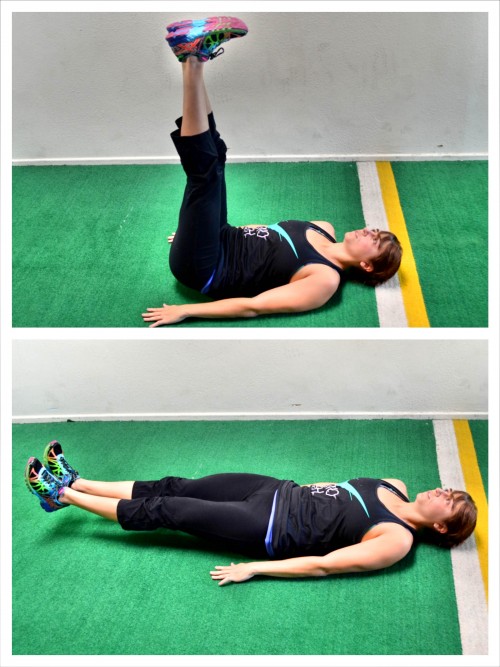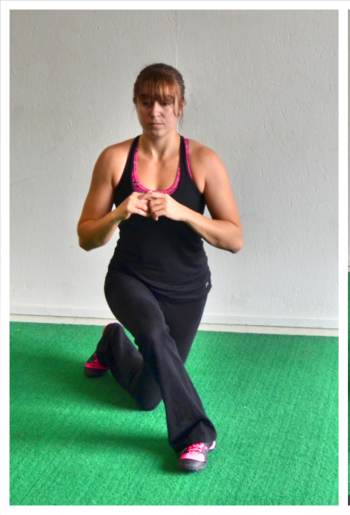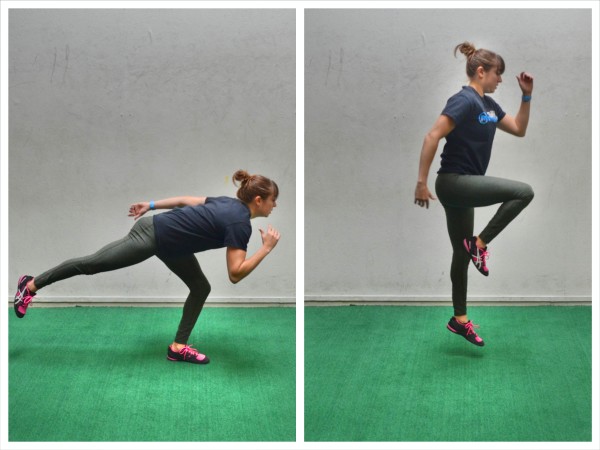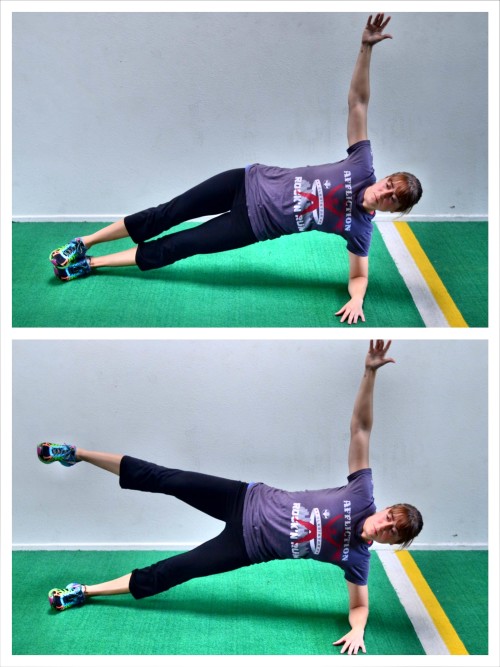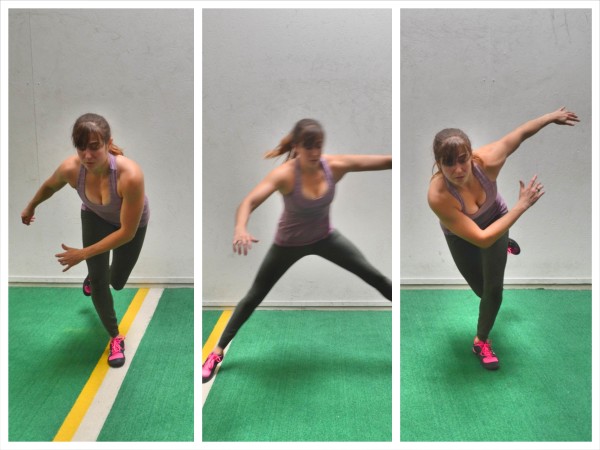WARM UP
Stretch and Roll Out:
Calves
Quads
Hamstrings
Adductors
Hips/Glutes
ACTIVATION
Complete 2 round of the following circuit.
CIRCUIT:
15 reps Frog Bridges
15 reps per side Side Plank Clams
WORKOUT
Set a timer for 5 minute rounds. Complete as many rounds of each circuit as you can in that time. Try not to rest but to go from one move to the next. Keep the reps short while still challenging yourself. You want to push hard without going to failure so that you can keep moving the entire time. Rest 1-2 minutes between circuits. Then rest 1-2 minutes before completing 5 rounds of the Burn Out.
CIRCUIT #1:
4-6 reps per side Alternating Side Lunges with Hop
6-10 reps Glute Bridges Off Box
4-6 reps Toes to Bar OR Leg Lowers
CIRCUIT #2:
4-6 reps per side Alternating Curtsy Lunge
4-6 reps per side Single Leg Deadlift Hops
4-6 reps per side Alternating Leg V-Ups
CIRCUIT #3:
4-6 reps per side Airborne Lunges
8-12 reps Reverse Hypers
4-6 reps per side Side Plank with Leg Raise
BURN OUT:
30 seconds Skater Hops
15 seconds Rest
COOL DOWN
Stretch and Roll Out:
Calves
Quads
Hamstrings
Adductors
Hips/Glutes
NOTES:
It is very important that you move quickly from one move to the next while still challenging yourself with each move. Don’t just do the top of the rep range to do the most. Do the rep range that challenges you while still allowing you to move to the next thing without having hit failure so that you have to rest. Record the reps and rounds you complete in each five minute circuit to try to beat it next time!
EXERCISE DESCRIPTIONS:
Frog Bridges – To do the Frog Bridge, place the bottom of your feet together and bend your knees as if doing the butterfly stretch. The closer you bring your feet in toward your crotch, the more mobility you need to do the move. Find a comfortable placement and allow your knees to fall open. Lie on your back on the ground with the outside of your feet down. Straighten your arms down by your sides then bend your elbows to 90 degrees so that only your upper arms are against the ground. Driving through your upper arms and the outsides of your feet, bridge up while keeping your knees open. Squeeze your glutes as you lift and pause at the top. Then lower back down. Keep your core engaged and really drive down through your upper arms so that you don’t push yourself backward. Do not let your knees close. Keep them relaxed and open. Concentrate on your glutes working to lift. Make sure to pause and engage your glutes at the top. If you feel your hips too much, don’t bring your heels in as close to your body. 
Side Plank Clams – To do the Side Plank Clam, lie on your side propped up on your forearm with your elbow underneath your shoulder. Bend your knees so that your feet and lower legs are behind you. You can place your top hand on your hip or reach it up toward the ceiling, but don’t touch it down to the ground. With your legs stacked, lift your hip up off the ground, driving through your knee and forearm. As you lift your hips up, lift your top leg up and toward the ceiling, keeping the knee bent. Open up as high as you can then lower the leg back down. As you lower the leg back down, lower your hip back down to the ground. Repeat, lifting up and, as you do, raise your top leg up toward the ceiling. Complete all reps on one side before switching. Make sure you are lifting straight up and not rotating toward the ground or open toward the ceiling. Also keep your elbow under your shoulder and do not get too spread out. When you lift the top leg, don’t rotate open as you do. Really focus on lifting with your glute. 
Alternating Side Lunges with Hop – To do Side Lunges with Hop, stand tall with your feet together. Step one foot out to the side nice and wide. Bend the knee of the leg you stepped out to the side with, keeping the other leg straight. Sit your butt back and lean over as you sink into the side lunge. Keep your back flat as you sit back. Then drive back up off your outside foot to come back to standing. When you come back to standing, jump up toward the ceiling, reaching up overhead. Then lunge out to the other side before coming back center and jumping toward the ceiling. Keep alternating lunges until all reps are complete. Make sure your heels stay down as you lunge out to the side. You want to make sure to sit your butt back.

Glute Bridges Off Box – To do the Glute Bridge Off Box, place your heels up on the box. You want your knees bent to 90 degrees or your butt to be even closer to the box. Do not let your butt get too far away from the box. Bend your arms to 90 degrees with just your upper arms on the ground. Then driving through your heels on top of the box, press your hips up as high as you can. Squeeze your glutes and keep your core tight as you bridge up so that you don’t hyperextend your low back. Also, do not let your knees fall in or out as you lift up. Keep your knees in line with your hips and ankles. Squeeze at the top and then lower down and repeat.

Toes to Bar OR Leg Lowers – To do Toes to Bar, you will raise your straight legs all the way up so that your toes touch the bar. To start, hang from the bar with your legs straight and together. Then engage your lats and pull as you raise your straight legs up toward the bar. Raise them all the way up so your feet touch the bar. Then slowly lower down. 
For the Leg Lowers, set up in the pelvic tilt with your legs raised up toward the ceiling. Then with your low back firmly against the ground and your abs braced, lower both your legs down toward the ground. If at any point while you lower your legs, your low back comes off the ground, stop and reset or regress and only lower one leg at a time. Then either decrease your range of motion or regress to the single leg lowers. However, if you can keep your abs engaged, lower your legs down so your heels are no more than an inch off the ground before raising them back up. You should also engage your glutes as you lower down. And make sure that your legs stay as straight as you can throughout the motion. 
Alternating Curtsy Lunge – To do Alternating Curtsy Lunges, you can start on your left side and take your left foot and step back behind your right leg. You will reach your left foot back to about “5″ on the clock. Make sure that you step far enough back (aka do not keep your left foot in too close to your right) that you can bend both knees and sink down into a deep lunge. Keep your right heel down on the ground and your chest up as you lunge back. Then come back to standing, driving off your front heel and the ball of your back foot. Make sure that you feel this lunge in the outside of your right butt cheek when you lunge back with the left leg. Then once standing again with your feet together, step your right foot back and across behind your left leg. Again come back up to standing. Lunge as deep as you can and move quickly alternating lunges.

Single Leg Deadlift Hops – To do the Single Leg Deadlift Hop, stand on one leg with the knee soft and the toe of your other foot lightly touching the ground. Hinge over, pushing your butt back and leaning your chest over toward the ground. Keep your back flat as you hinge over and lift your other leg back toward the wall behind you. You will want to swing your arms as if running as you do the hinge and hop. As you hinge over, the opposite arm of your standing leg should be forward while the same arm will be back. Hinge over quickly, bending the standing leg just a little. Then quickly drive back up to standing, exploding up off the ground as you come back up. As you jump up off the ground, bring the back knee up and forward. Your chest should be up nice and tall as you hop off the ground. Your other arm will also swing forward as you jump while the arm that was forward in the hinge goes back. Using your arms can help propel you up higher. Land back on the same leg and hinge back over before jumping back up. You do not have to jump super high for this move to challenge you. Focus on landing only on one leg and maintaining your balance throughout the reps. If you really struggle with balance, don’t actually jump just move quickly as if you are going to jump up at the top. 
Alternating Leg V-Ups – To do Alternating Leg V-Ups, Lie flat on your back with your legs out straight in front of you. Beginners will rest the leg not being raised up on the ground while advanced exercisers will keep both feet off the ground at all times. Lift one leg up toward the ceiling. Crunch the upper body up and reach the opposite arm up toward the toes of the raised leg. Then lower that leg and lower your upper body down. Raise the other leg and the opposite arm to touch it as you crunch up. Keep alternating sides.

Airborne Lunges – To do the Airborne Lunge, stand on your right foot and bend your left knee, bringing your heel back up toward your butt. Then bend your right knee and sit back into your right heel as you lunge down, dropping your left knee to the ground. Do not touch the left foot down when you drop the knee to the ground. Do not reach the left knee back too far when you lunge down. Keep it just a little behind your right foot so that you are almost slightly squatting. Lean forward as needed to counterbalance but do not round forward. To come back to standing, drive up through your right heel and straighten the leg. Complete all reps on one side before switching. Make sure you engage your core and keep your standing heel on the ground at all times. Also, make sure you feel this move in the glute of your standing leg. Beginners may need to hold a pole or use a Suspension Trainer and not sink as low to start. 
Reverse Hypers – Choose Bent or Straight. You can even switch it up each time you do the workout but stick with one the entire workout. To do the Bent-Knee Reverse Hypers (bottom), lie face down on a bench, box or table. Place your hips right on the edge of the bench and hold on to the bench or something in front of you. If your hips are too far on the bench, you are more likely to hyperextend your low back in an attempt to get your hips up higher. Place your heels together and bend your knees to about 90 degrees. Flex your feet. You can choose to turn your toes out to hit a slightly different aspect of your glutes as well. Then, with your knees bent, kick your heels up toward the ceiling, squeezing your glutes to lift. You can sort of drive up and out a bit to really get your glutes to work. Make sure that you squeeze your glutes as you lift and don’t hyperextend your low back just to get up higher. Lift so that your quads are about parallel to the ground and lower back down. Only lift higher if you don’t feel your lower back take over. You want to focus on and make sure your glutes are working to lift NOT your low back. The most important part is that you feel your glutes tighten. To do a Straight-Leg Reverse Hyper (top), you will set up like you are going to do the Bent-Knee Variation, however, you will keep your legs straight. Still place your heels together though. And you can also choose to turn your toes out to hit a slightly different aspect of your glutes. Then, keeping your legs straight, raise your heels up toward the ceiling. Squeeze your glutes as you lift. Lift till your legs are about parallel to the ground and lower back down. Only lift higher if you don’t feel your lower back take over. You want to focus on and make sure your glutes are working to lift NOT your low back. If you do feel your low back, make sure you are pressing your pelvic down into the bench as you squeeze your glutes to lift. Hold at the top and lower back down.

Side Plank with Leg Raise – To do the Side Plank with Leg Raise, set up in a Side Plank from your forearm. Set up on your side and prop yourself up on your forearm with your elbow right below your shoulder. Your legs should be out straight. Stack your feet. Then, driving through your forearm and the sides of your feet, lift your bottom hip up off the ground as high as possible while keeping your body in a nice straight line. Squeeze your belly button in toward your spine and keep your glutes tight. Do not let your chest rotate forward toward the ground or your top hand touch the ground. Keep your top hand on your hip or reach it up toward the ceiling. Then, holding the Side Plank, lift and lower your top leg up and down. Do not let your hips drop toward the ground as you lift the top leg. This is a challenging move. Beginners may need to start in a Side Plank from their knees.

Skater Hops – To do Skater Hops, start standing to one side of the space you have to use. This is a lateral hop so make sure you have space to jump to one side. Starting to the right, shift your weight so that you are standing on your right foot. Sink down into a little squat and swing your arms down in front of you and out to the right. Then explode up off the right leg and jump to the side, landing on your left leg. Keep your chest facing straight ahead as you jump and land. As you land on that left leg, sink into a slight squat, pushing your butt back so that you load your glute to help you jump back laterally to the right. Use your arms to not only help you balance but also help propel you further when you jump. Let them swing toward whichever side you are jumping to. Then push off your left leg and jump back right, landing on your right foot. Try not to touch the other foot down when you land. Only touch the other foot down if you need to for balance. Beginners may need to go slower and not jump as far to each side. While this is a cardio move, you also want to use it to work on your balance. Beginners will want to hold for a second on each leg and balance. As you advance, do not pause on either side of the jump to balance. You want to jump as far to each side as you can as quickly as possible! 


